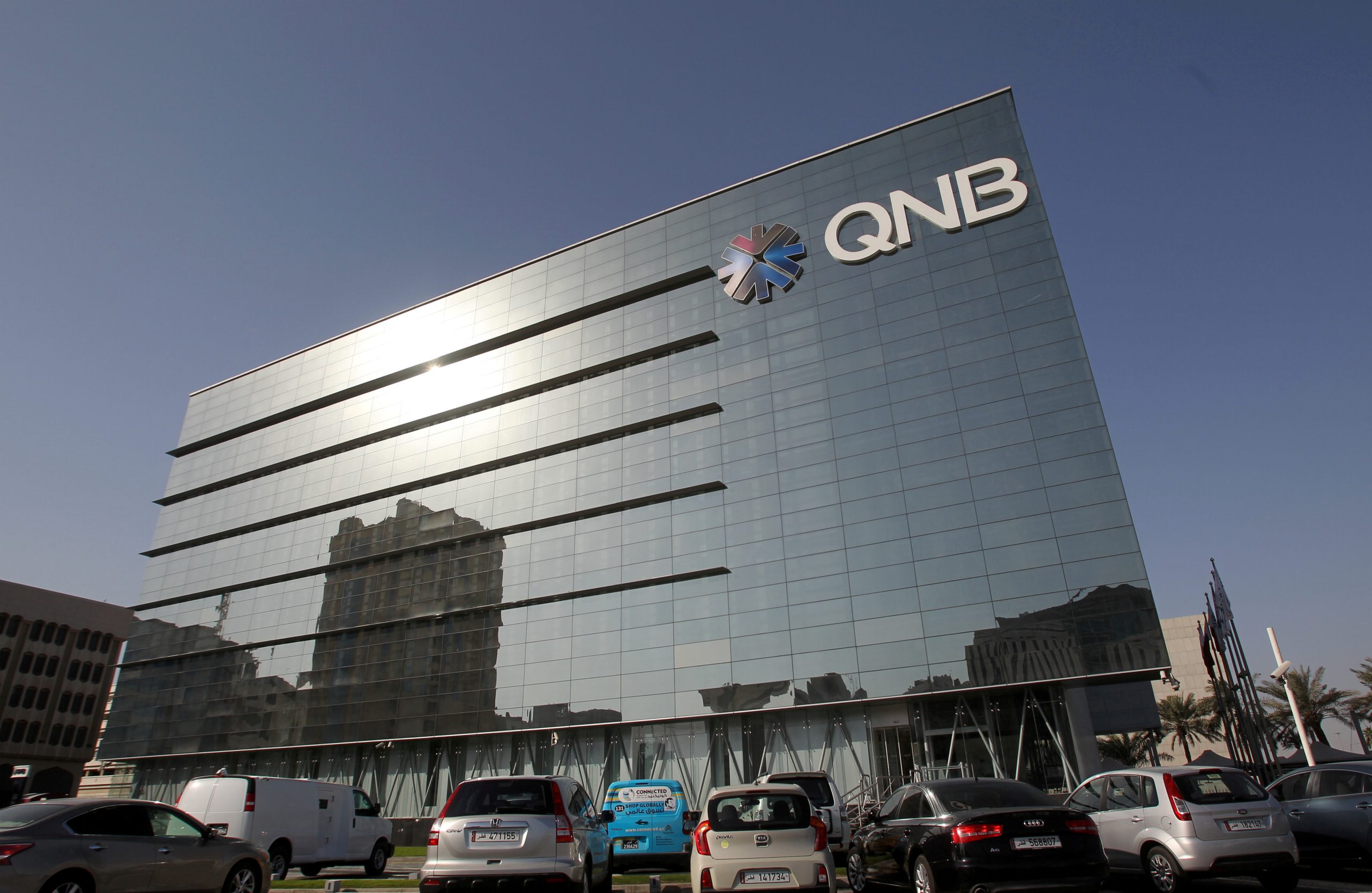QNB: Causes for EM Relative Underperformance Are Starting to Erode
بنك قطر الوطني: أسباب تراجع الأداء النسبي في الأسواق الناشئة بدأت في التلاشي
QNA
Doha: Qatar National Bank (QNB) said that the causes for the relative underperformance of emerging markets (EM) in recent years are starting to erode as most EM countries currently have better fundamentals than advanced economies.
In its weekly commentary, QNB said, “Over the last decade, emerging markets (EM) were a synonym for economic dynamism, opportunity and growth. In fact, EM economies have been outperforming most other countries when it comes to GDP expansion and other activity metrics until the beginning of 2020. However, this multi-decade picture has changed markedly with the turnaround brought by the Covid-19 pandemic. Following the shock caused by the global spread of Covid-19, EM countries suffered from below average growth and subdued performance on a relative basis vis-à-vis advanced economies. Main reasons for this were initially low vaccination rates, supply chain constraints, and less accommodative monetary as well as fiscal policies. The major slowdown of China also added to the EM macro headwinds.” “The growth differentials between EM and advanced economies is estimated to have narrowed in 2021 and 2022, significantly below historical norms (see graph). This means that, on average in the last two years, EM countries grew only around 1.3 percent and 1.42 percent faster than advanced economies. This stands in stark contrast to the usual 2.88 percent of outperformance. Narrower growth differentials point to a slower catch up or growth convergence towards the higher levels of economic output, productivity and standards of living found in advanced economies.
“In our view, however, the bout of EM underperformance is about to end, with growth accelerating to 4.2 percent this year from 3.7 percent in 2022, while advanced economies are set to slow to 0.9 percent from 2.6 percent in the same period. This would support a 330 bps growth differential in favour of EM versus advanced economies, 42 bps above the long-term average.
The bank explained, “Two main factors explain the likely return of EM outperformance in 2023.
“First, macroeconomic fundamentals are back again stronger in most EM than advanced economies. Several advanced economies have been accumulating acute imbalances from excessive policy stimulus following the pandemic and the Russo-Ukrainian War. This was due to the bottom-up pressures to protect the income of households and corporates from large negative shocks. In contrast, most EM countries had less policy space and were more disciplined in adjusting to economic conditions, responding more immediately to runaway inflation and getting it under control before their economies overheated too much. As a result, EM countries are now under less pressure to tighten policy and their economies already largely adjusted to less benign global conditions.
“Second, the slowdown in China was a particularly strong headwind to EM countries in 2022. This is due to both the relative size of the Chinese economy within the EM universe and its direct and indirect trade and financial links with other EM. Chinas economy represents about 1/3 of total EM GDP.
Moreover, Chinese growth has a high multiplying effect, often spilling over to Emerging Asia and EM commodity exporters. Thus, the slowdown of growth in China last year, precipitated by Zero Covid policies and the lagged effects of a significant tightening in monetary, fiscal and regulatory policies in 2021, indirectly affected the economic performance of EM.
Chinese GDP growth slid from over 8 percent in 2021 to 3.2 percent last year. In 2023, however, China is expected to be a tailwind to EM, as its economy is set to fully re-open from Covid policies and authorities will press ahead with fiscal as well as monetary stimulus measures. This will support a significant acceleration of Chinese growth to a more normal 5.5 percent rate.
“Third, despite the generally positive EM macro backdrop, global conditions are particularly benign for net commodity exporters that run current account surpluses, such as the countries of the Gulf Cooperation Council (GCC). This is because they are benefitting from still elevated commodity prices, which supports both external and government revenues. This is even more beneficial in a period when international liquidity is tighter and borrowing costs are high, as it allows for continuing expenditure, investments and growth. In contrast, conditions are less benign for net commodity importers, particularly if they run current account deficits and need to rely on constant external funding to maintain a certain level of consumption and investment.
QNB concluded, “All in all, the causes for the relative underperformance of EM in recent years are starting to erode. Most EM countries currently have better fundamentals than advanced economies and the Chinese economic recovery is set to support higher EM growth rates. Net commodity exporters that run current account surpluses are particularly well positioned to capitalize on the more positive environment.”
قنا
الدوحة: اعتبر بنك قطر الوطني أن أسباب تراجع الأداء النسبي في الأسواق الناشئة في السنوات الأخيرة بدأت في التلاشي، مشيرا إلى أن معظم هذه البلدان تتمتع حاليا بأسس أفضل من الاقتصادات المتقدمة.
وأوضح التقرير الأسبوعي للبنك أن التعافي الاقتصادي في الصين من المقرر أن يدعم ارتفاع معدلات النمو في الأسواق الناشئة. ويعتبر المصدرين الرئيسيين للسلع الأساسية الذين يتمتعون بفوائض في الحساب الجاري في وضع جيد بشكل خاص للاستفادة من هذه البيئة الأكثر إيجابية.
وذكّر التقرير أنه على مدى العقد الماضي، كانت الأسواق الناشئة نموذجا للديناميكية الاقتصادية والفرص والنمو، لافتا إلى أن اقتصادات الأسواق الناشئة تفوقت على معظم البلدان الأخرى عندما يتعلق الأمر بتوسع الناتج المحلي الإجمالي ومقاييس النشاط الأخرى حتى بداية عام 2020. ومع ذلك، فقد تغيرت هذه الصورة التي امتدت لعدة عقود بشكل ملحوظ مع التحول الذي أحدثته جائحة كوفيد-19.
وأشار إلى أنه في أعقاب الصدمة الناجمة عن الانتشار العالمي للجائحة، عانت بلدان الأسواق الناشئة من معدلات نمو دون المتوسط وانخفاض الأداء على أساس نسبي مقابل الاقتصادات المتقدمة. وكانت الأسباب الرئيسية لذلك في البداية هي تدني معدلات التطعيم، والقيود المرتبطة بسلسلة التوريد، والسياسات النقدية والمالية الأقل تيسيرا. كما أدى التباطؤ الكبير في الصين إلى زيادة الرياح المعاكسة الكلية التي واجهت الأسواق الناشئة.
وبين التقرير أن نوبة ضعف الأداء في الأسواق الناشئة توشك على الانتهاء، مع تسارع النمو إلى 4.2% هذا العام من 3.7% في عام 2022، بينما من المقرر أن يتباطأ النمو في الاقتصادات المتقدمة إلى 0.9% من 2.6% في نفس الفترة. وهذا من شأنه أن يدعم فارق نمو قدره 330 نقطة أساس لصالح الاقتصادات الناشئة مقابل الاقتصادات المتقدمة، أي 42 نقطة أساس أعلى من المتوسط طويل الأجل.
وأشار إلى وجود عاملين رئيسيين يفسران العودة المحتملة للأداء المتفوق في الأسواق الناشئة في عام 2023. أولهما أن أسس الاقتصاد الكلي عادت لتصبح أقوى مرة أخرى في معظم الأسواق الناشئة مقارنة بالاقتصادات المتقدمة. فقد راكمت العديد من الاقتصادات المتقدمة اختلالات حادة من سياسات التحفيز المفرط في أعقاب الجائحة والحرب الروسية الأوكرانية. وحدث ذلك جراء تصاعد الضغوط لحماية دخل الأسر والشركات من الصدمات السلبية الكبيرة. في المقابل، كان لدى معظم بلدان الأسواق الناشئة حيز أصغر لإجراءات السياسة الاقتصادية، وظلت أكثر انضباطا في التكيف مع الظروف الاقتصادية، والاستجابة بشكل فوري أكثر للتضخم الجامح والسيطرة عليه قبل أن يسوء الوضع التضخمي أكثر في اقتصاداتها. ونتيجة لذلك، تتعرض بلدان الأسواق الناشئة حاليا لمستوى أقل من الضغوط لتشديد سياساتها النقدية والمالية، كما أن اقتصاداتها قد تكيفت إلى حد كبير مع الظروف العالمية الأقل اعتدالا.
العنصر الثاني الذي أشار إليه التقرير، تعلق بالصين فبالرغم من أن التباطؤ المسجل كان بمثابة رياح معاكسة قوية بشكل خاص لدول الأسواق الناشئة في عام 2022. ومع ذلك، في عام 2023، من المتوقع أن تكون الصين مصدرا للعوامل المساعدة للأسواق الناشئة، حيث من المرتقب أن تتم إعادة انفتاح اقتصادها بالكامل من سياسات كوفيد، وستمضي السلطات قدما في إجراءات التحفيز المالي والنقدي. وسيؤدي هذا الأمر إلى تسارع كبير في النمو الاقتصادي الصيني إلى معدل طبيعي يبلغ 5.5%.
وقال التقرير انه على الرغم من الخلفية الكلية الإيجابية بشكل عام في الأسواق الناشئة، فإن الظروف العالمية مواتية بشكل خاص لمصدري السلع الرئيسيين الذين يتمتعون بفوائض في الحساب الجاري، مثل دول مجلس التعاون الخليجي، وذلك لأنهم يستفيدون من استمرار ارتفاع أسعار السلع، مما يدعم الإيرادات الخارجية والحكومية على حد سواء. ويعد هذا الأمر أكثر منفعة في فترة يحتدم فيها نقص السيولة الدولية وترتفع فيها تكاليف الاقتراض، حيث يسمح هذا الوضع باستمرار الإنفاق والاستثمارات والنمو. وعلى النقيض من ذلك، فإن الظروف أقل اعتدالا بالنسبة للمستوردين الرئيسيين للسلع الأساسية، لا سيما إذا كانوا يعانون من عجز في الحساب الجاري ويحتاجون إلى الاعتماد على التمويل الخارجي المستمر للحفاظ على مستوى معين من الاستهلاك والاستثمار.




